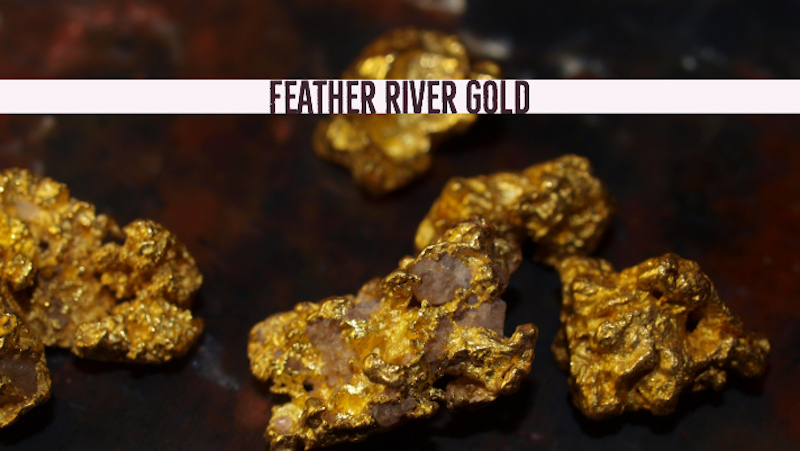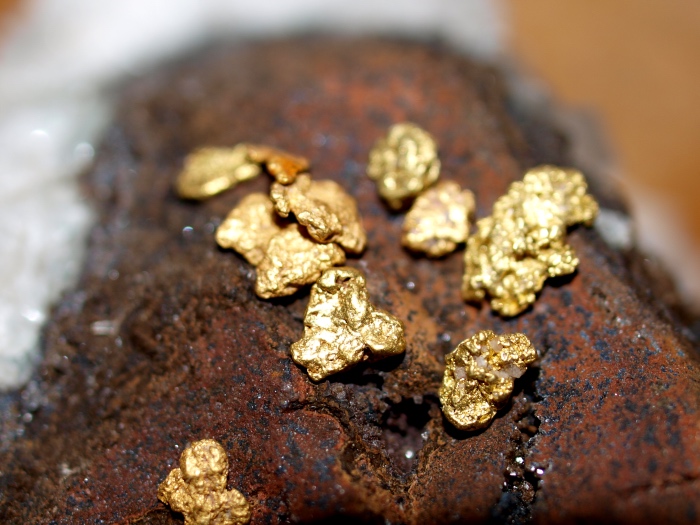
This article will outline the mining history of the Feather River of California. It was one of the most active places involved in the production of gold at the height of the gold rush. Considerable amounts of placer gold was mined from its waters.
Gold has been recovered from all throughout the drainage. There are four main forks to the Feather River; North, Middle, the South as well as the West Branch.
It’s no secret that the Feather River has a great reputation where it concerns gold mining. Gold was first discovered on this river in 1949 not too long after an earlier discovery that took place at Sutter’s Mill on the American River.
At the time California’s gold rush was at its peak, the Feather River attracted huge numbers of miners who executed their gold mining operations along the river. As a result, this influx of miners attracted the establishment of various gold towns, as the gold was simply extracted from the shallow river gravel. Among the towns constructed was Ophir City, which later was renamed as Oroville.
Mining Camps and Gold Discoveries on the Feather River
An especially rich discovery of gold was made at Bidwell’s Bar. This place became known to be the richest gold deposit on the Feather River. This strike brought in even more men, and mining continued for years along the banks of the river.
Other places gold was discovered include that of the Cape and the Union Cape claims, which were found above Oroville. In these areas California recorded some of the most rewarding operations in the whole region. To maximize the operations, ditches were constructed to aid in the ground sluicing operations. Hydraulic mining started in full force and millions in gold continued to be produced.
Nelson Point is another rich site along the Feather River. This place is situated along the Middle Fork about 25 miles north of Downieville. Every shovelful of gravel at this location had gold in it.
It was the discovery of gold in Nelson’s Creek in early 1850s which triggered the establishment of Nelson Point. From the 1850s on for several decades, this point was regarded as a very important mining camp, as it was strategically placed close to a number of rich gold mining sites. Among the mining sites in this particular area were Sailor Bar, Bells Bar, Hottentot Bar, Henpeck Flat, English Bar, Sunny Bar and Poverty Flat.

Another famous place gold was mined on the Feather River is Rich Bar. Some reports reveal that during the time of its peak operations in gold mining, about $9 million worth of gold was produced. As a matter of fact, the first gold discovery on Feather River’s banks occurred on Rich Bar before it was given that name in 1850. From its mining operations, gold worth $4 million dollars had been extracted. After several decades of productive mining the active operations ceased in 1890.
Meanwhile, not far from Rich Bar, were three more gold camps. Such included the Missouri Bar, Smith Bar and Indian Bar. These three camps had equally produced a fair share of gold in the region. A total of about $20 million worth of gold was realized from the operations.
In addition to the mining camps above, the Feather River also hosted other small camps such as the Cariboo, Crescent Mills, Quiney, Cherokee, Big Bar, Long Bar and Taylorville, and many more.
Also Read: Plumas County Gold – Prospecting Areas in Northern California
There’s Still Plenty of Gold in the Feather
Gold prospecting on the Feather River is still underway today. All of the locations discussed above are great places to explore. Even though the richest placer deposits are long gone, they early miners certainly didn’t get it all. Panning along the banks of the river will still produce some good gold.
In addition to the river, you might also want to explore some of the hundreds of smaller creeks and tributaries that feed into the Feather River. Most of these are also gold-bearing waters and have perhaps been overlooked compared to the main river.
I recommend putting together a good crevicing kit and exploring some of these tributaries in the summer when water levels are low. Clean out some of the bedrock cracks and pan out the material. You will have a pretty good chance of finding some decent gold.
Next: Good Times & Gold Mines of Sierra City, California
